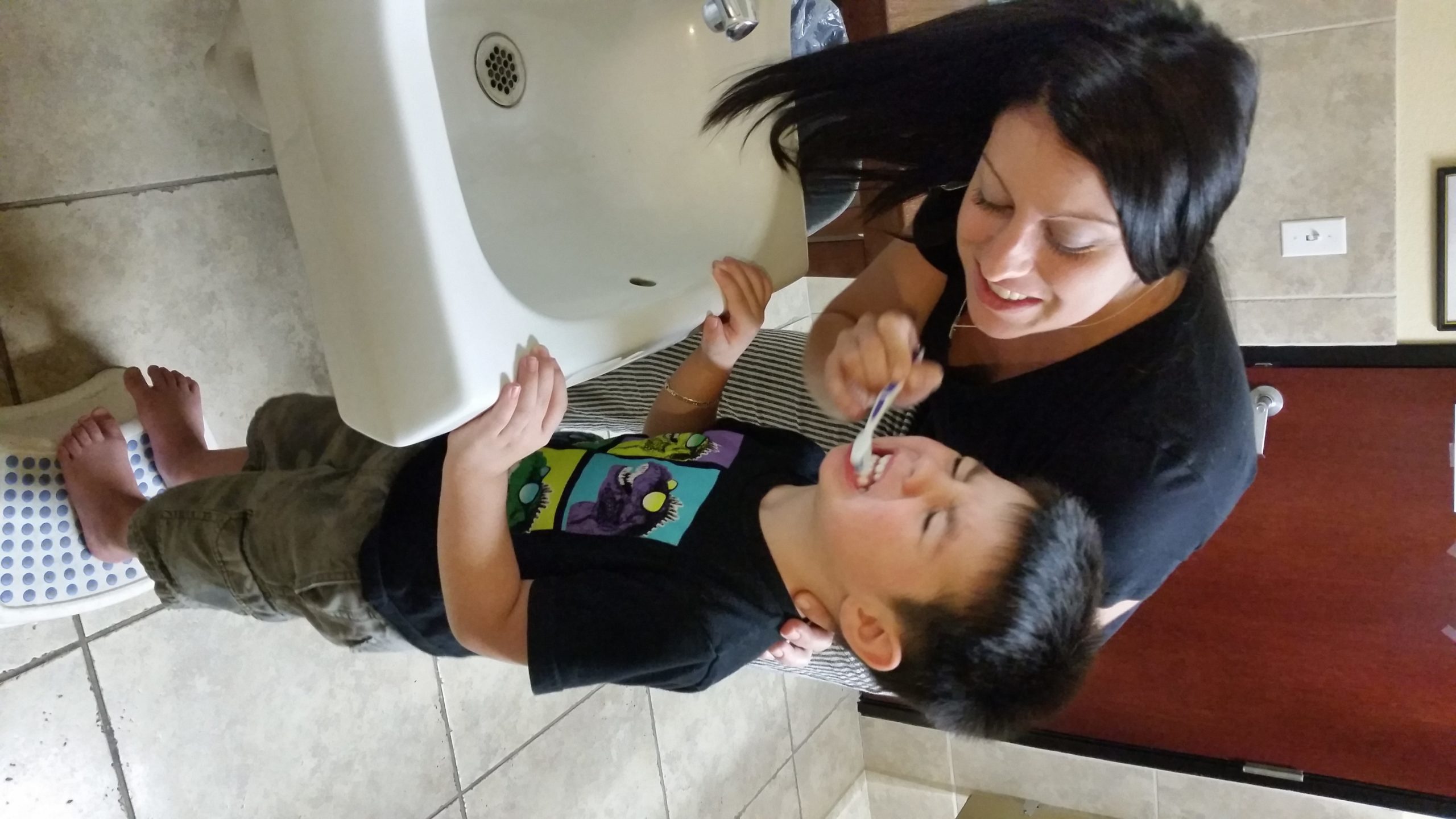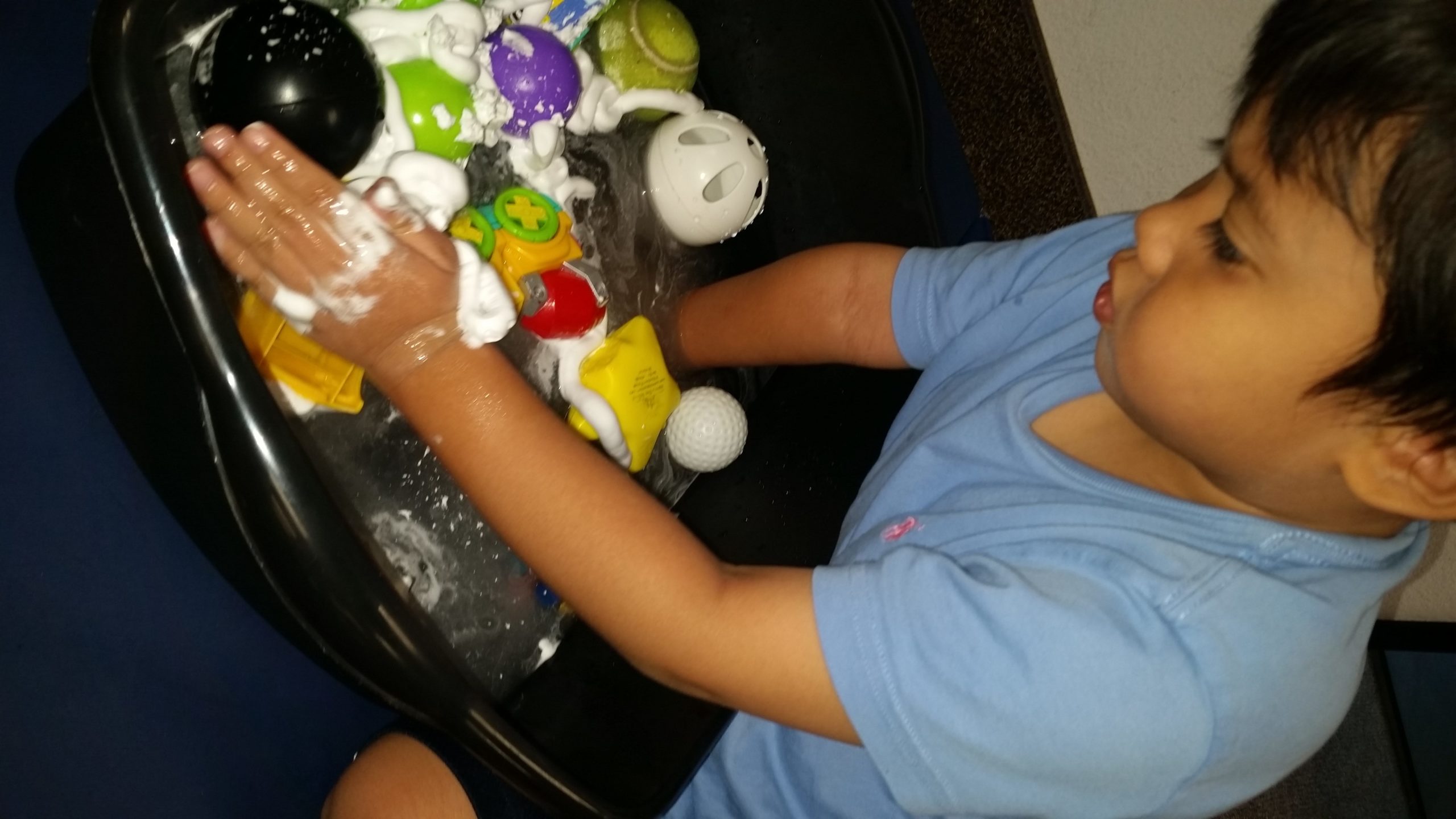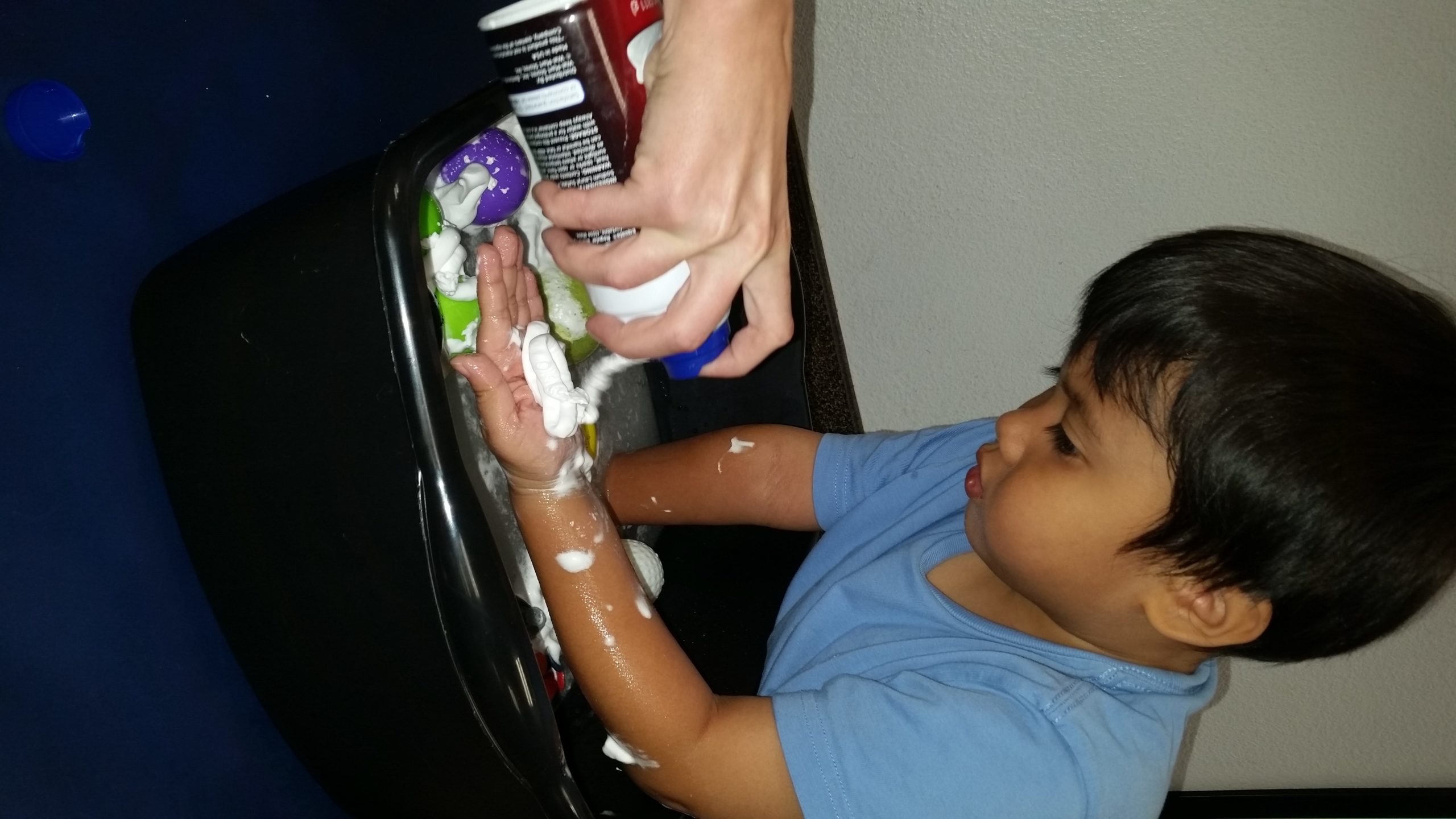Could Your Child Have Tactile Defensiveness?
By Jenn Gile, OTR/L
Kids Place West Pediatric Occupational Therapist
Our sense of touch:
Our sense of touch is registered through various receptors in our skin making up the tactile system. The tactile system provides us with information about touch sensations: pressure, vibration, movement, temperature and pain. Within this system, there are surface receptors that register light touch and deeper receptors that register firm touch.
 Our sense of touch is one way that we learn about our environment. The ability to process tactile information efficiently allows us to form bonds with those close to us and helps us to feel safe. Our perception of touch contributes to our social and emotional development. An important role of our tactile system is its ability to alert us when something is unpleasant or dangerous.
Our sense of touch is one way that we learn about our environment. The ability to process tactile information efficiently allows us to form bonds with those close to us and helps us to feel safe. Our perception of touch contributes to our social and emotional development. An important role of our tactile system is its ability to alert us when something is unpleasant or dangerous.
For some children, the tactile system does not properly functioning, therefore not providing this protective response. In these children, touch that is typically perceived by others as good is perceived as painful. This causes a fight-or-flight response. When children react with this response it is referred to as tactile defensiveness.
When children have tactile defensiveness, the surface receptors (light touch) are over sensitive and send a ‘painful’ or ‘uncomfortable’ response to the nervous system. Through activation of the deep receptors (firm touch), we are able to decrease the negative response to touch. Many children who have tactile defensiveness will seek out increased amounts of firm touch to decrease the level of hypersensitivity. These children do not like unpredictable situations and may have ‘behaviors’ due to their anticipation of contact they won’t like.
Signs to look for:
- Trouble standing close to people in lines.
- Pulls away or is upset when someone brushes into them.
- Avoids getting messy and becomes upset when face/hands are dirty.
- Avoids certain textures (i.e. sand, grass, play dough, finger paint, water, etc.).
- Resists grooming (i.e. brushing teeth, brushing hair, etc.).
- Says “oww” when barely touched.
Activities to decrease tactile defensiveness at home:
Before attempting an activity, prepare your child by giving deep pressure or massage to the part of the body that will be used. This will prepare the skin and decrease the intensity of the ‘pain’ signal. For example, if they are playing with finger paint, massage the hands. If brushing hair, massage the scalp.
Always start with dry, less unpleasant stimuli moving to wet and slimy stimuli as tolerance improves:
- Bean bin
- Rice bin
- Sand
- Playdough
- Putty
- Water beads
- Shaving cream/foam soap
- Finger paint
Make it fun!
Using a preferred toy – hide it in the bin, bath it, paint with it, etc.
Start playing with the substance next to your child and slowly encourage them to join.
Do NOT force them – allow your child to play at their own pace!
If you are still concerned or are having trouble, please contact Kids Place – an occupational therapy evaluation may be necessary.








